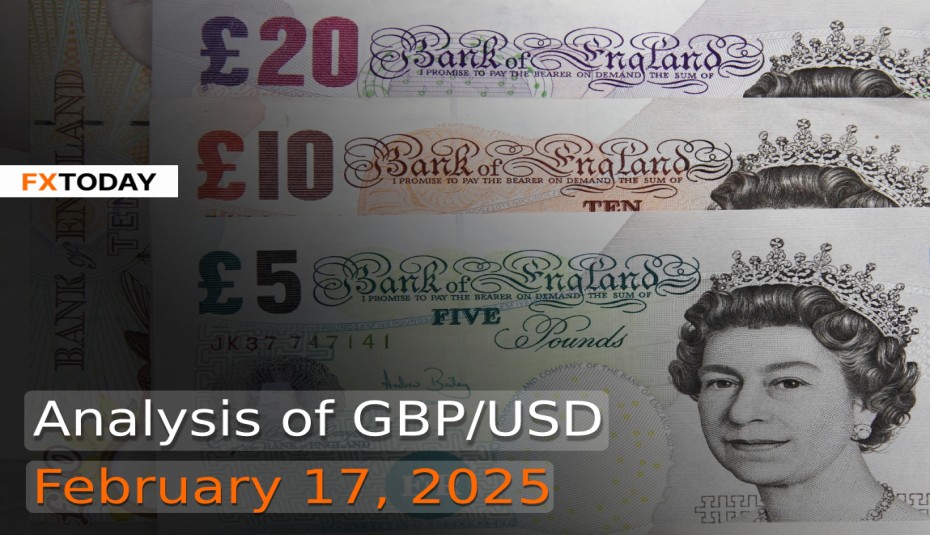UK GDP Surprises with Growth, Avoids Recession, but Economic Woes Loom
The UK economy posted an unexpected growth of 0.1% in the last quarter of 2024, narrowly avoiding a recession in early 2025. This modest expansion followed a previous quarter of stagnation, bringing annual growth to 1.4%, up from the revised 1.0% in the prior period. December’s 0.4% GDP increase, exceeding November’s 0.1% rise, contributed significantly to this outcome.
Despite this positive development, economists remain cautious. Deutsche Bank’s economists acknowledged the strong end to the year but warned of persistent economic vulnerabilities, including rising commodity prices, increased energy costs, and the looming threat of a trade war. Additionally, survey data suggest that any economic rebound in 2025 will likely be sluggish at best.
The Bank of England (BoE) has responded by cutting interest rates by 25 basis points to 4.5%, continuing a shift toward easing borrowing costs after rates peaked at a 16-year high. The central bank also revised its 2025 growth forecast downward from 1.5% to 0.75%, signaling the possibility of further rate cuts. Previously, concerns were mounting over a potential recession if the economy contracted in early 2025 following late 2024 weakness. Analysts at Capital Economics remain pessimistic, citing weak business sentiment, declining employment, and lackluster private-sector activity as major obstacles to sustained growth.
Despite outperforming major European economies such as Germany, France, and Italy in Q4, the UK lagged behind the United States’ 0.6% expansion. December’s growth was driven by strong performance in services, including wholesalers, film distributors, and hospitality businesses. However, government spending and inventory accumulation played a key role, while business investment dropped by 3.2%, and household spending remained stagnant. The sharp decline in business investment has also raised concerns about the impact of a £25 billion tax increase introduced in the Labour government’s October budget.
Economic momentum in Britain has weakened, with businesses cutting staff and investment in response to tax hikes and ongoing uncertainty. A survey by the Recruitment and Employment Confederation revealed a sharp drop in job vacancies, the steepest since 2020. Wage growth has slowed, which may help curb inflation concerns for the BoE, but the overall labor market remains fragile. Small business confidence has also plummeted to its lowest level in five years. Furthermore, higher taxes are prompting businesses to raise prices or reduce their workforce, exacerbating economic strain.
Public sector productivity has also struggled, particularly in healthcare, which remains below pre-pandemic levels despite increased funding. Since 2019, overall public sector productivity has declined by 8%, placing additional pressure on public finances and contributing to stagnant living standards. Meanwhile, the UK housing market has slowed in anticipation of an impending tax increase, dampening price growth. While buyer demand has risen, uncertainty over interest rates and tax policies continues to weigh on the sector.
Looking ahead, the UK faces multiple economic headwinds in 2025, including weak global demand, higher energy costs, and the potential for new trade barriers. Although the government is pushing for infrastructure investment and regulatory reforms to stimulate growth, many analysts remain skeptical. With borrowing costs still relatively high and fiscal pressures mounting, Chancellor Rachel Reeves may have to consider spending cuts to stay within borrowing targets.
On the trade front, the United States views its relationship with Britain differently from other countries, as it does not have a significant trade deficit with the UK. However, challenges persist, particularly regarding tariffs. The UK hopes to secure an exemption for its steel and aluminum products, citing their importance to American defense and manufacturing supply chains. Trump recently announced a 25% tariff on all steel and aluminum imports but hinted that a special arrangement with Britain might be possible.
In financial markets, the U.S. dollar has fallen to a two-month low, partly due to delays in implementing Trump’s tariff policies. While the overall trade strategy remains unchanged, the slow rollout has provided temporary relief to markets. Meanwhile, geopolitical developments, particularly the Russia-Ukraine conflict, have drawn renewed investor attention.
In the U.S., retail sales in January experienced their largest decline in nearly two years, likely impacted by extreme weather conditions, wildfires, and automobile shortages. However, economists caution that this drop does not necessarily indicate a shift in consumer behavior, as it follows four months of strong spending growth. Some economists believe that consumer uncertainty, driven by tariff-related concerns and inflation expectations, may have also contributed to the sales drop. Previously, preemptive buying ahead of anticipated price hikes from tariffs had boosted sales, but sentiment is now weakening.
Further economic data indicates that U.S. business inventories declined in December for the first time in nine months, as strong consumer demand depleted retail and wholesale stock levels. Despite these shifts, business sales increased, suggesting steady demand. However, with businesses holding lower inventory levels, future supply chain disruptions or demand fluctuations could influence economic performance in the coming months.
As a result, the UK’s downgraded 2025 growth forecast signals further easing, capping GBP/USD gains. Meanwhile, USD weakness from delayed tariffs and soft retail sales has kept the pair stable. However, additional UK economic strain or trade tensions could pressure GBP/USD, while improved risk sentiment or stronger UK data may offer short-term upside.
Data for Technical Analysis (1H) CFD GBP/USD
Resistance : 1.2601, 1.2606, 1.2614
Support : 1.2585, 1.2580, 1.2572
1H Outlook
Source: TradingView
Buy/Long 1 If the support at the price range 1.2570 - 1.2585 is touched, but the support at 1.2585 cannot be broken, the TP may be set around 1.2606 and the SL around 1.2563, or up to the risk appetite.
Buy/Long 2 If the resistance can be broken at the price range of 1.2601 - 1.2616, TP may be set around 1.2629 and SL around 1.2578, or up to the risk appetite.
Sell/Short 1 If the resistance at the price range 1.2601 - 1.2616 is touched, but the resistance at 1.2601 cannot be broken, the TP may be set around 1.2585 and the SL around 1.2623, or up to the risk appetite.
Sell/Short 2 If the support can be broken at the price range of 1.2570 - 1.2585, TP may be set around 1.2556 and SL around 1.2608, or up to the risk appetite.
Pivot Points Feb 17, 2025 02:35AM GMT
|
Name
|
S3
|
S2
|
S1
|
Pivot Points
|
R1
|
R2
|
R3
|
|---|---|---|---|---|---|---|---|
| Classic | 1.2564 | 1.2572 | 1.2585 | 1.2593 | 1.2606 | 1.2614 | 1.2627 |
| Fibonacci | 1.2572 | 1.258 | 1.2585 | 1.2593 | 1.2601 | 1.2606 | 1.2614 |
| Camarilla | 1.2593 | 1.2595 | 1.2597 | 1.2593 | 1.2601 | 1.2603 | 1.2605 |
| Woodie's | 1.2568 | 1.2574 | 1.2589 | 1.2595 | 1.261 | 1.2616 | 1.2631 |
| DeMark's | - | - | 1.2589 | 1.2595 | 1.261 | - | - |
Sources: Investing 1, Investing 2
















